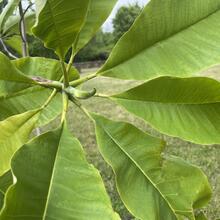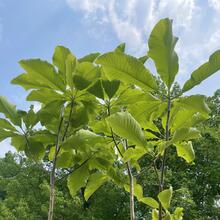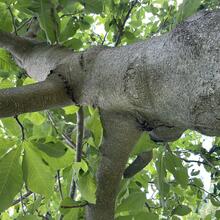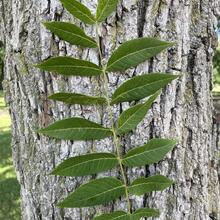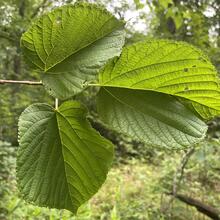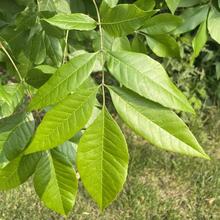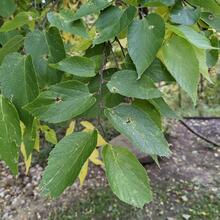Magnolia macrophylla
Magnoliaceae
Named for large leaves 25-42" long. Native range mostly limited to Southeastern U.S. Prefers soil with deep organic layer. Roots recover slowly from stress and injury. Sensitive to both drought and poor drainage.
Summary
 Climate Tolerance
Climate Tolerance
Very Poor
Wildlife Benefits
Pollen source for beetles; fruit food source for birds and small mammals
Pollination Type
Pollinator
Plant Hardiness Zones
5 to 8
# Butterfly/Moths that use as host
NA
Bloom Time
Spring (May-Jun)
 Shade/Sun Tolerance
Shade/Sun Tolerance
Full Sun to Shade: Receives less than 2 to 6 or more hours of direct sunlight
 Maximum Height
Maximum Height
Medium (40-75 ft)
 Growth Rate
Growth Rate
Rapid: 2 ft or greater per year
 Soil Type
Soil Type
Loam: Equal mix of clay, sand, and silt. Moderate moisture retention and high nutrient availability.
Silt: Medium sized particles. Moderate moisture retention and high nutrient availability.
 Soil Moisture Tolerance
Soil Moisture Tolerance
Moist - Wet
Root - Fungal Association
Arbuscular mycorrhizae: Symbiotic relationship with fungi that exist on inside of plant root cells, facilitating nutrient uptake
Pest & Pathogen Risks
Very Low
 Urban Stress Tolerance
Urban Stress Tolerance
Medium: Tree can adapt to a few urban conditions and will generally grow well
Drought Tolerance
Sensitive: Tree will become stressed during periods of drought
Coefficient of Conservatism
7
Native Status
OH-Native: Species is native to Ohio
NatureServe G-rank
G5
Plant Community Type
- Beech Mixed: Occasional
- Oak Mixed: Absent
- Alluvial: Absent
- Red Maple Mixed: Absent
- Ruderal: Absent
Bloom Color
White
Form
Tree
 Lifespan
Lifespan
Medium: 100-250 years
Soil pH
Acid-Neutral (pH 5.5-7.5)
Wetland Indicator Status
FACU: Facultative Upland, usually occurs in non-wetlands, but may occur in wetlands
Soil Compaction Tolerance
Sensitive: Tree will become stressed from soil being compacted
Heat Tolerance
Sensitive: Tree will become stressed from increased temperature due to urban heat island effects
Salt Tolerant
Sensitive: Intolerant to either aerial salt spray and/or salt present in soil
Native County Status
Not Native to NE Ohio
IUCN Red List Assessment
Least Concern
